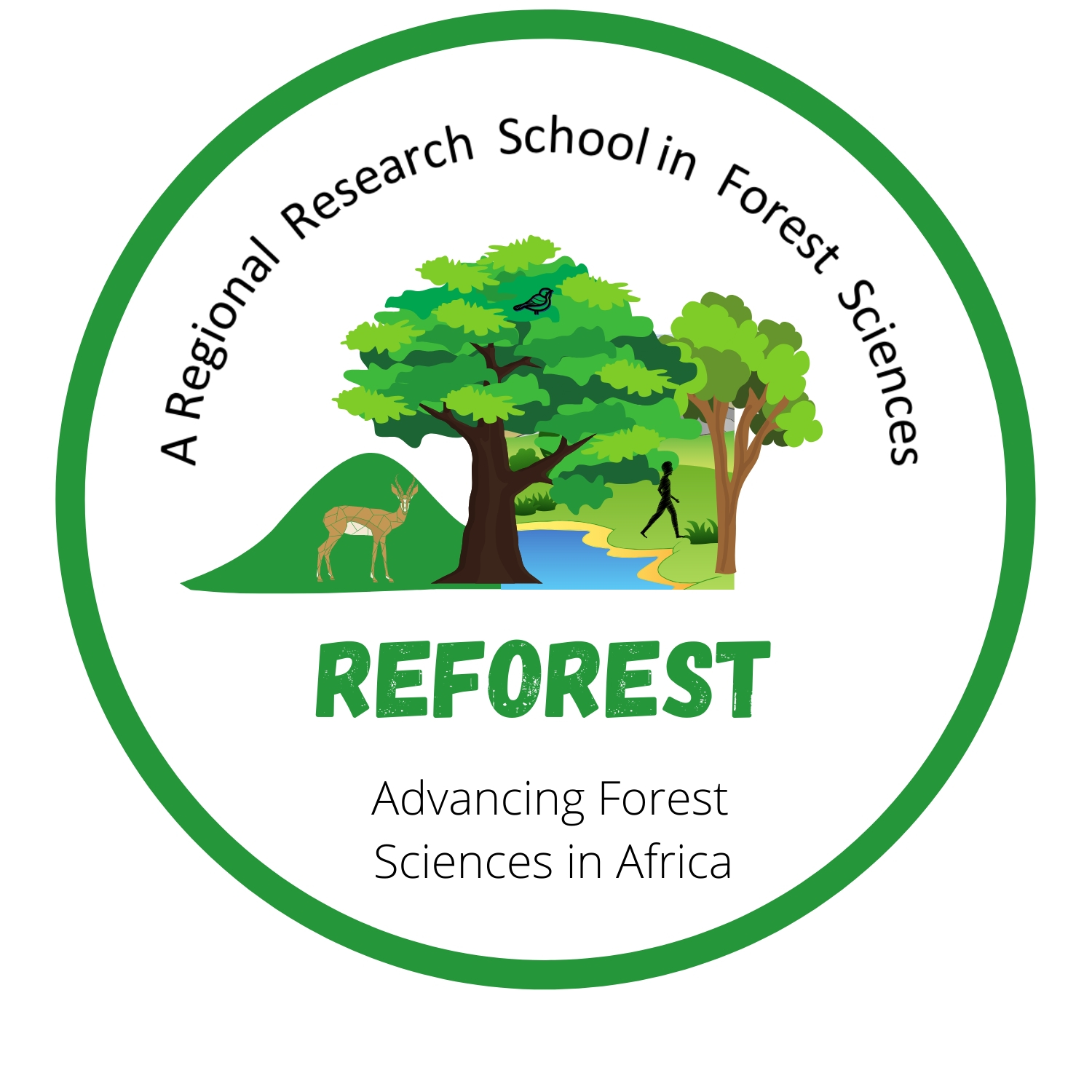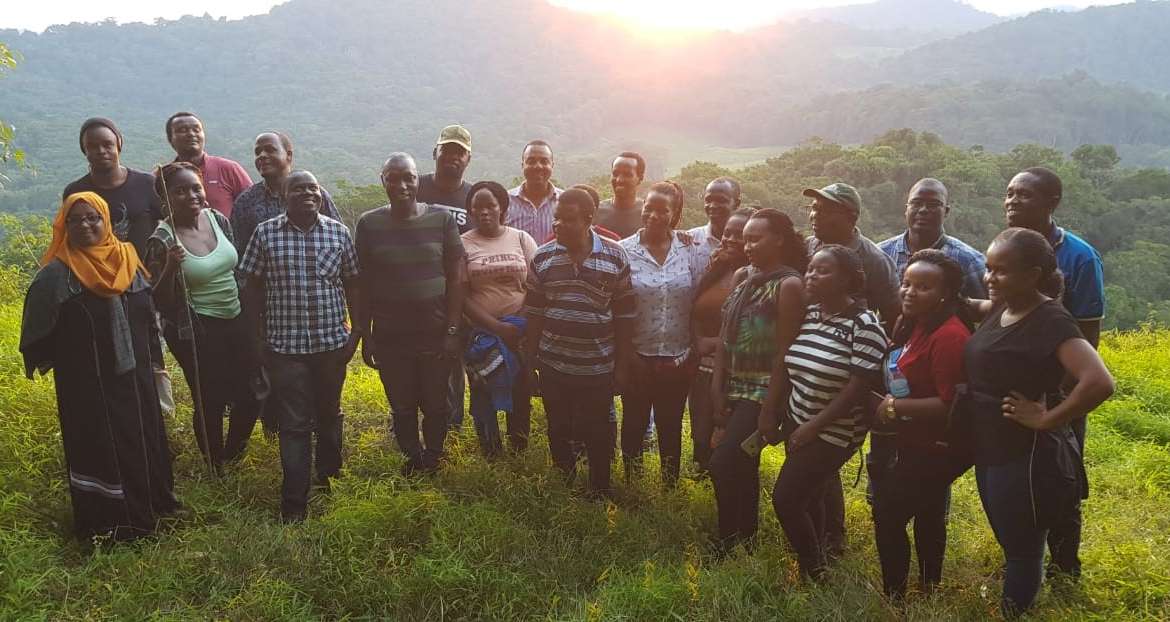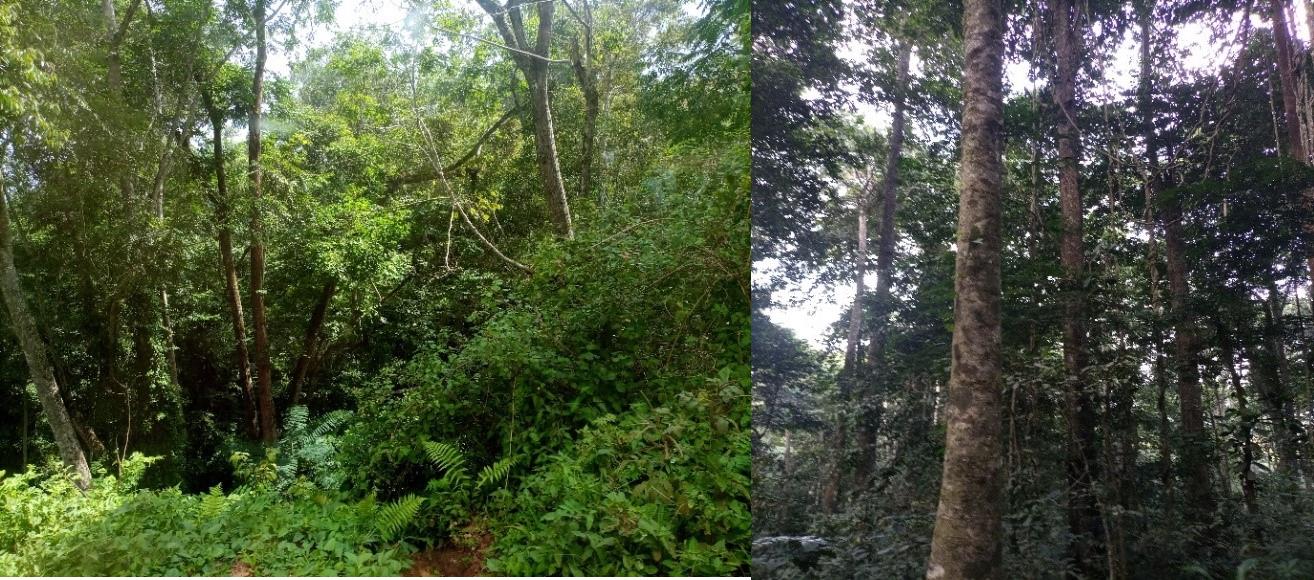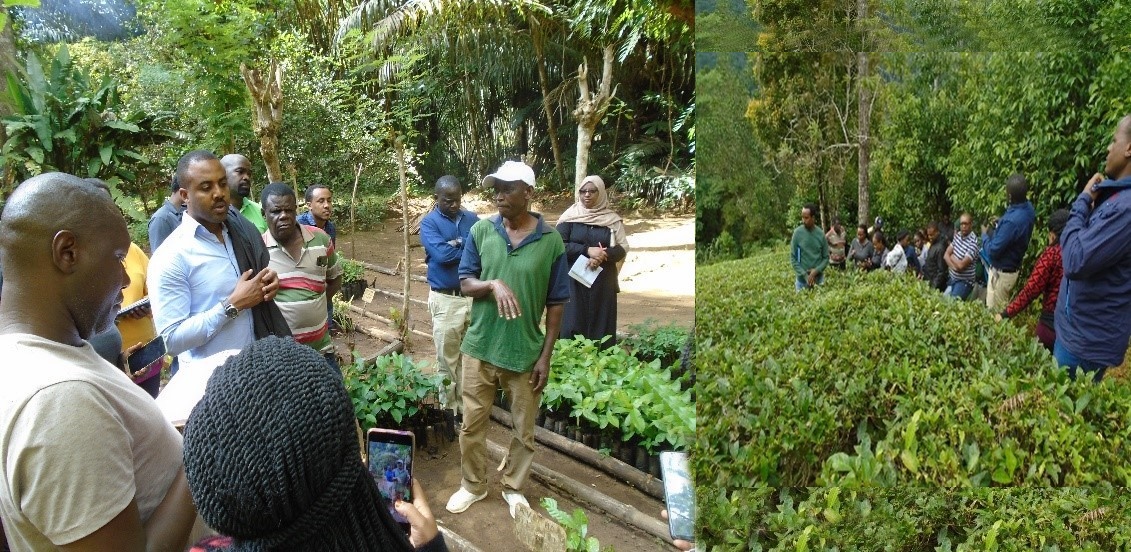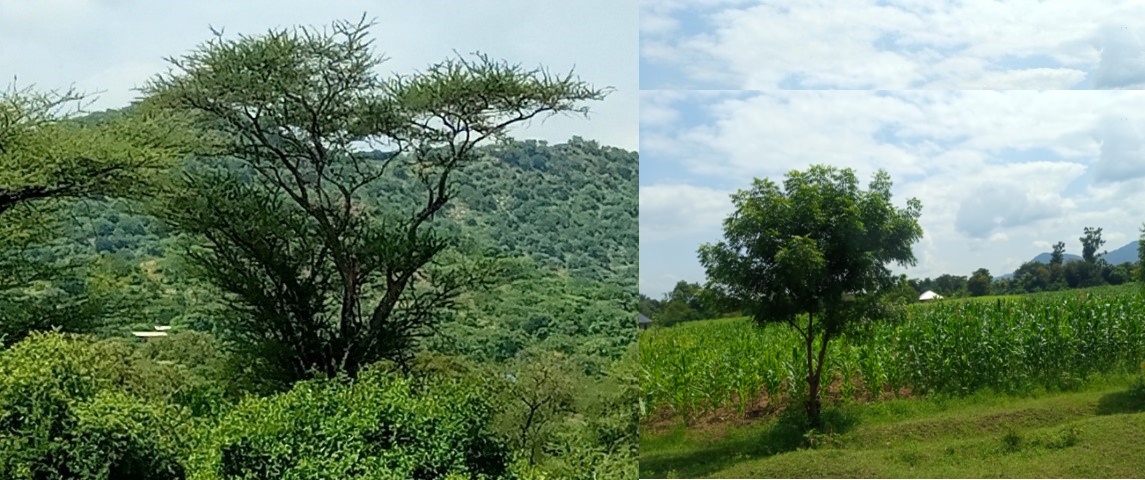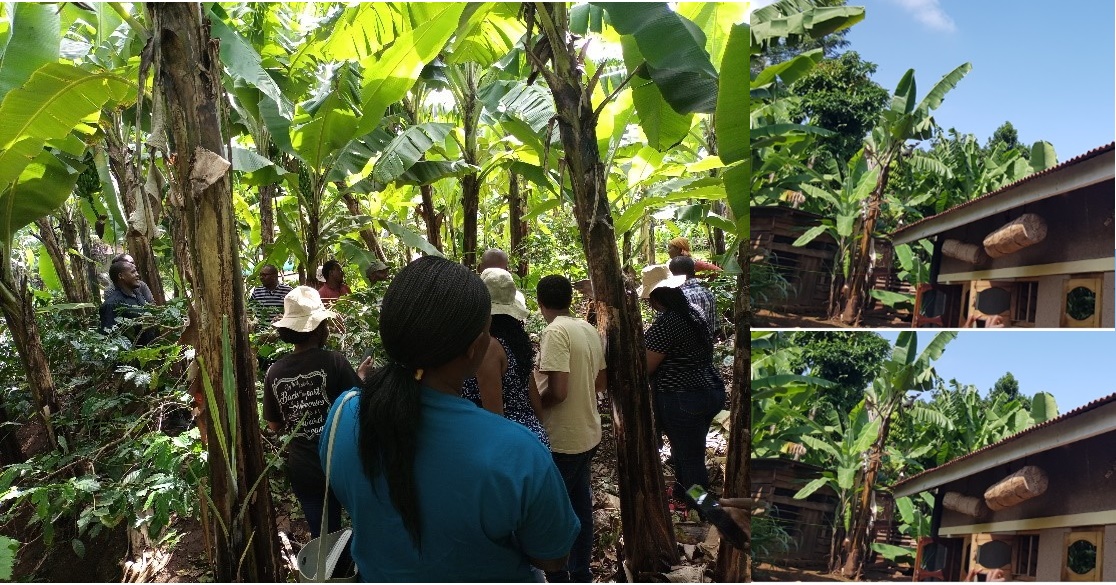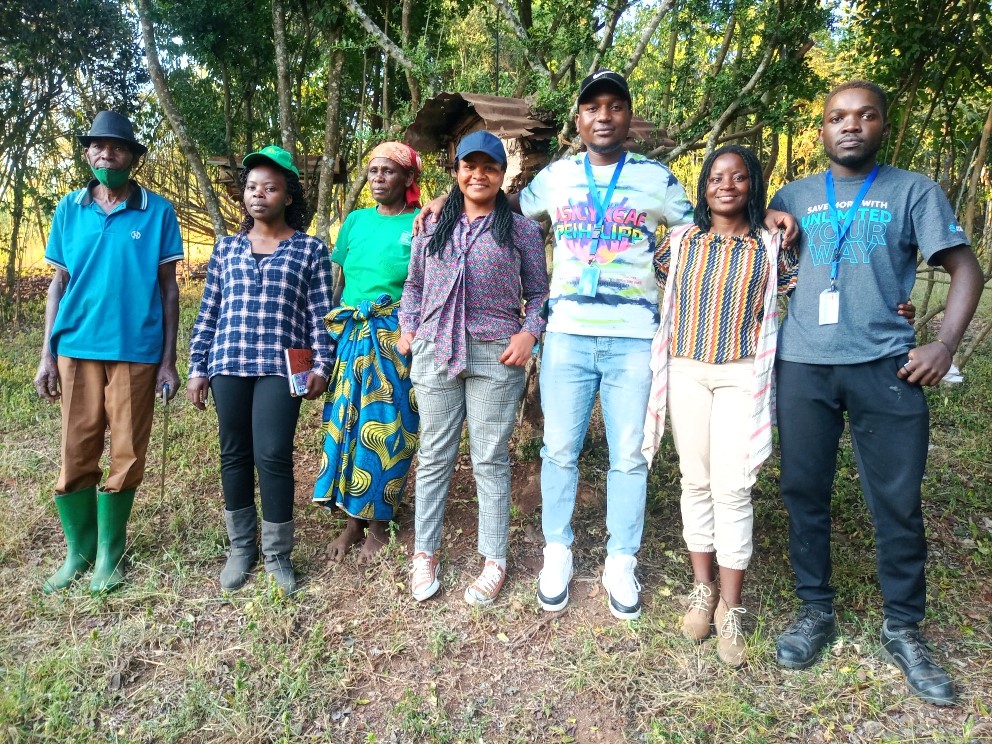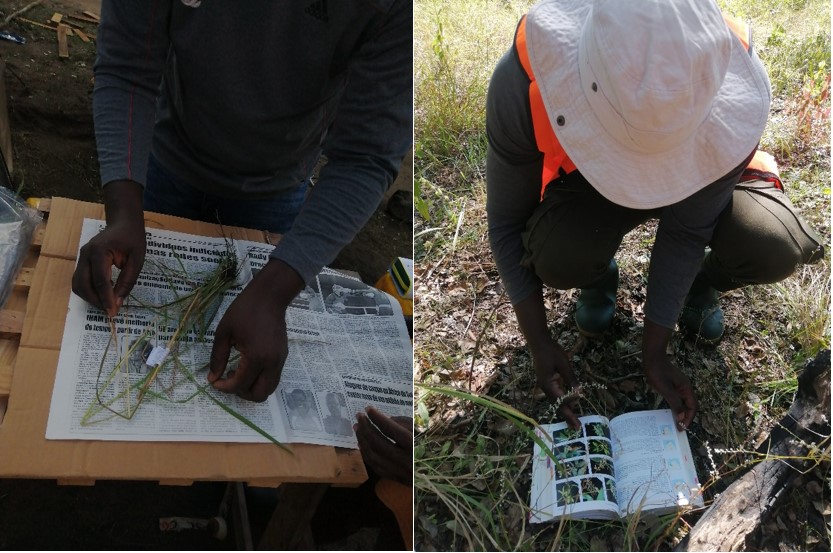Reforest students and instructors at Amani Nature Reserve – Mbomole view (1050 m.a.s.l) (photo credit: Alberto Manhica)
Tanzania’s rich biodiversity positions the country as one of the mega-biodiversity hotspots in the world. The coastal and Eastern Afromontane are of special interest to conservation, research, and development. The remarkable range of ecosystems from coastal to Afromontane creates an array of species diversity and interactions.
The Sokoine University of Agriculture organized the “Ecosystem and Biodiversity” field excursion for the Forest Science PhD students from 19th – 23rd May 2021 to the coastal region of Tanga and the Afromontane region of Kilimanjaro Mountain. The aim was to expose students to various ecosystems and biodiversity therein.
The exceptional coastal mangrove forests
Mangroves are unique types of forests growing at the interface of land and sea. Globally, there about 60 mangrove species that strive in the harsh saline coastal conditions with 8 species recorded in Tanzania: Avicennia marina, Rhizophora mucronata, and Sonneratia alba as the most widespread.
Mangroves play key ecological and socio-economic roles among the millions of people living in and around the mangrove ecosystem. Currently, the mangrove ecosystem are heavily threatened by anthropogenic activities and hence, there is a need for proper governance, restoration of degraded areas, and sustainable resource utilization.
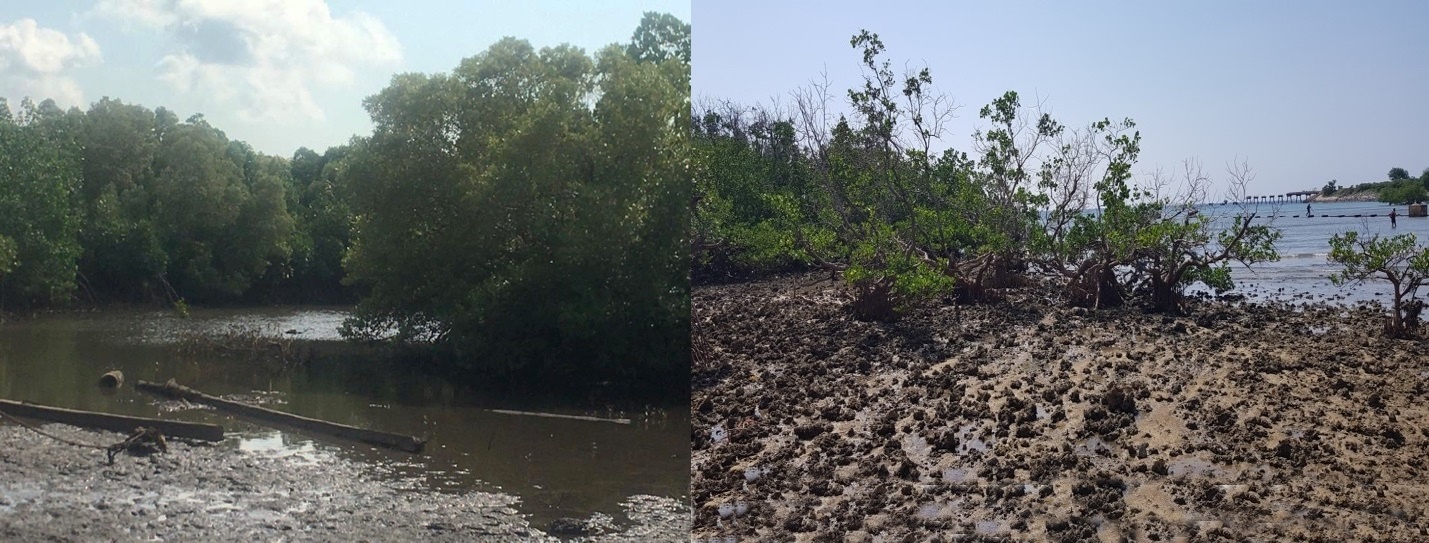
Mangrove forest and the coastal ecosystem (Photo by Scolastica Justine and Daniel Obua)
Amani Nature Reserve: Reconciling conservation and livelihoods within the Enclaves
Amani NR is part of the East Usambara Biosphere reserve which was established in 2000 under the UNESCO Man and Biosphere Reserves.
The enormous species endemism and biodiversity makes it a unique biodiversity hotspot in Africa. It spans an altitudinal range of 300 – 1128 m above sea level, creating ecosystems of semi-deciduous forests in the lowland, sub-montane and evergreen forests in the highland.
Diverse and famous endemic fauna (Legless frog, Endemic chameleons, Mountain combra) and flora (African violet Saint paulia), beautiful sceneries and a more diverse oldest botanical garden established in 1902 by the Germans.
Revenue generated through ecotourism is shared with adjacent local communities through a well-developed benefit-sharing mechanism. The shared revenue is used to support the socio-economic and infrastructural needs of the enclave communities.
Research and development has been on-going at the botanical garden which has an area of 340 ha with more than 1,000 species of plants collected from all over the world.
To promote sustainable livelihood, domestication of the various tree species and spices was carried out. Examples of the domesticated spices (Cloves, Cinnamon, Cardamom, Vanilla and Black pepper) and timber species (Grevillea robusta, Cordia alliodara, Measopsis eminii and Tectona grandis) from Amani botanical garden and incorporated into the local farming systems. However, the major challenge with the spice farming especially Cinnamon is the gall forming aphid infestation and lack of value addition for premium price.
Diverse semi-deciduous forests and sub-montane evergreen forests of Amani NR (Photo by Lemma Tiki)
Domestication of Spices and integration of clove, Cinnamon, cardamom and Vanilla plants into tea plantation and other farming systems (Photo by Kissa David and Daniel Obua)
Agroecology at play within a transformed Mt. Kilimanjaro Landscape: Chagga home garden agroforestry system
Kilimanjaro region in Tanzania is famous for its diverse agro-ecology and ecosystems. The Somali-Masai rich woodland has been heavily degraded due to human settlement, monoculture farming and high livestock population.
The dominant Acacia spp and Balanite aegyptica have been overexploited. Therefore, climate smart forestry is recommended for the restoration of the ecosystem and biodiversity.
Photos of Acacia woodland and Mono-cropping of Maize in the lowland areas (Photo by Lemma Tiki)
Agroforestry interface signifies the importance of agroforestry in biodiversity conservation and ecosystem services provision. This interface is typical of the Chagga agroforestry which involves optimization, diversification and conservation of biodiversity within a small land holding.
The major crops are the banana, coffee, beans, vanilla, black pepper; the multi-purpose trees/shrubs include Pilea tetraphylla, Milicia excelsa, Grevillea robusta, Cordia africana, Persea Americana, Olea welwitschii, Ricinus communis, Jatropha carcus, Dracena usambarensis among others.
Multi-layer Chagga home garden and domesticated stingless bee agroforestry system (Photo by Kissa David and Lemma Tiki)
It is worth noting, biodiversity does not respect political boundaries, the different dynamics observed resulted from the influence of local drivers. The variety of life on earth explains the functional role of biodiversity that each species no matter how small has an important role to play, thus the more the biodiversity the better the society.
Prepared by REFOREST Programme students
Read also:
Climate change is real: could agroforestry be a sustainable solution to dryland farming?
